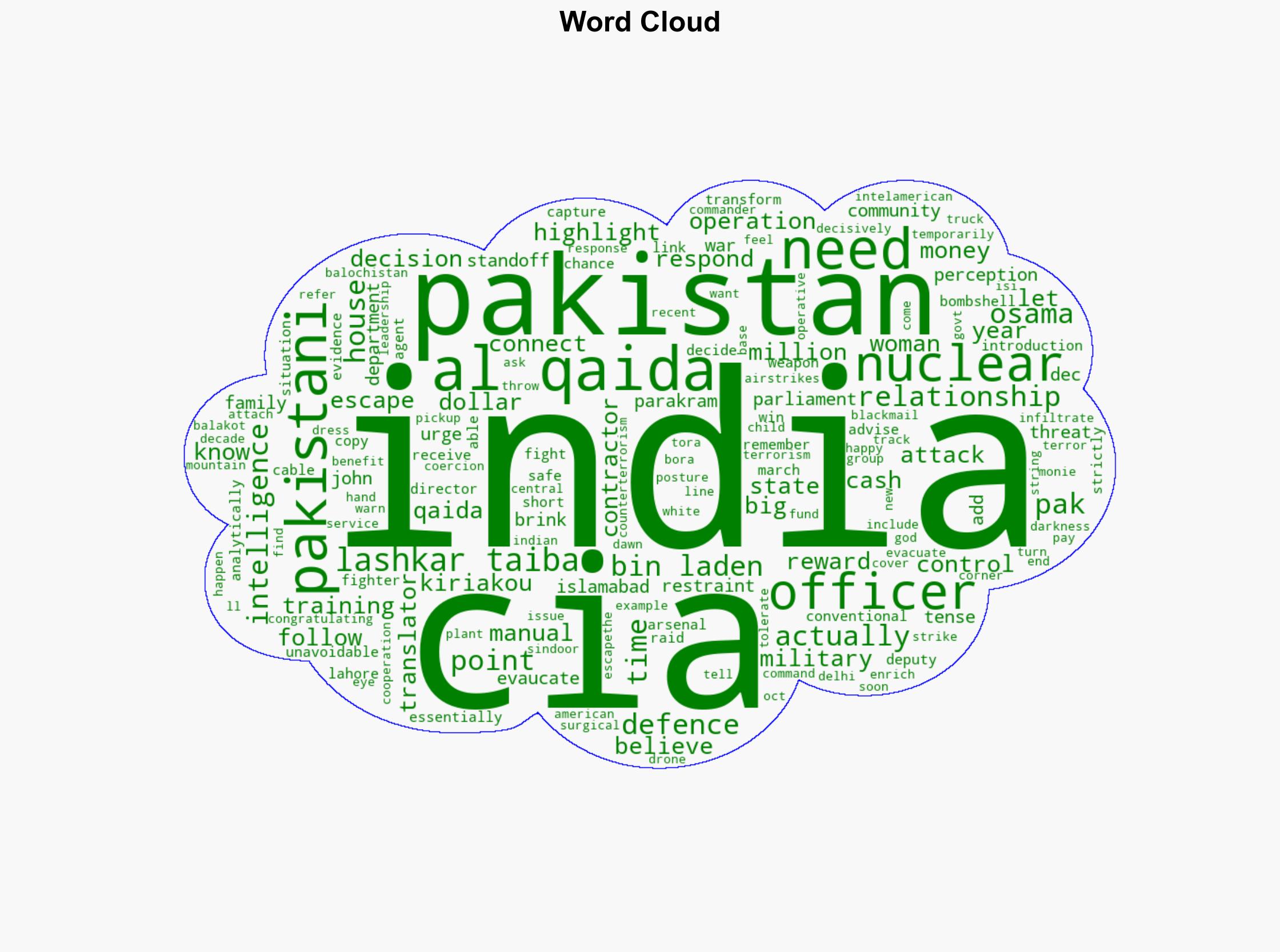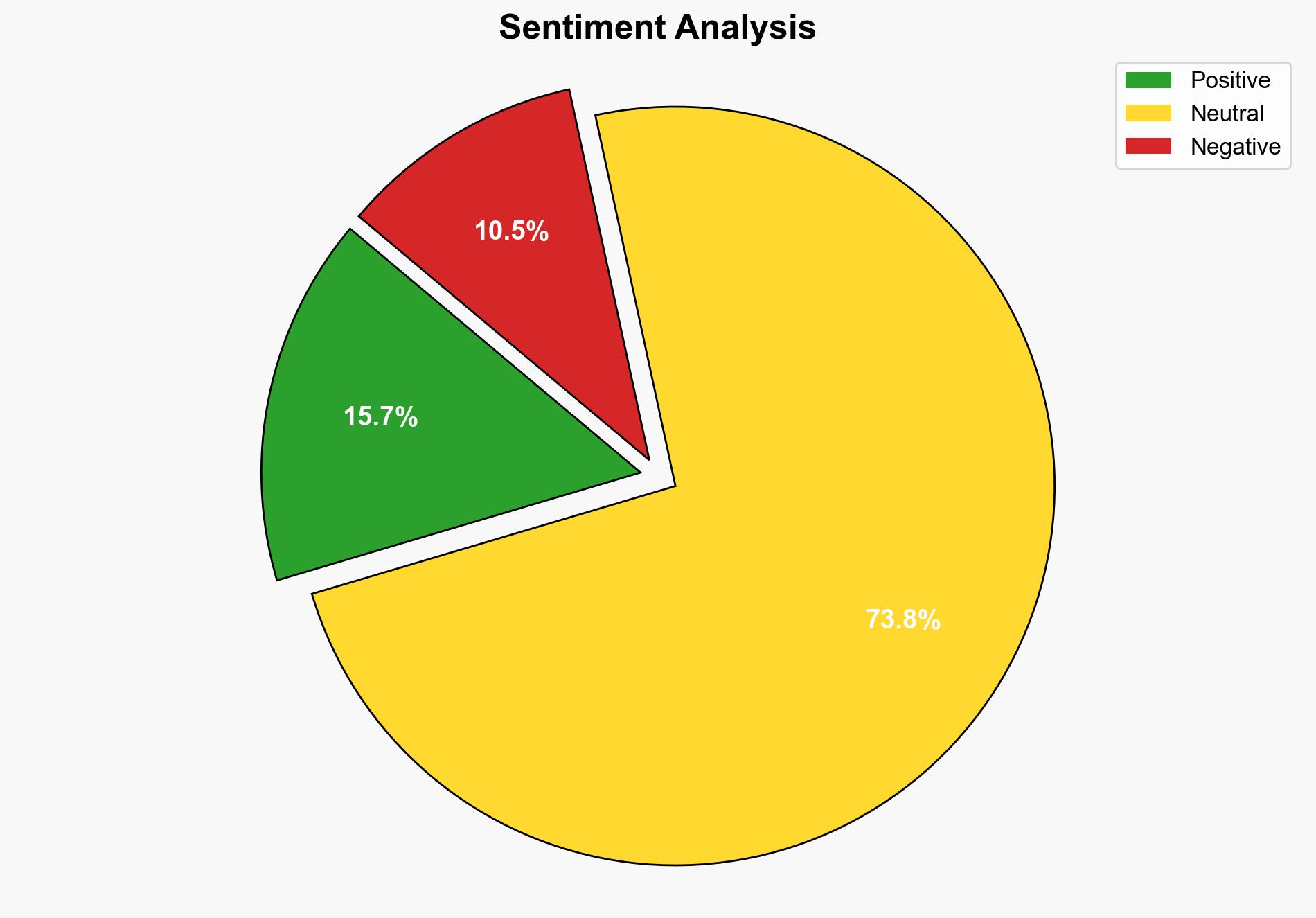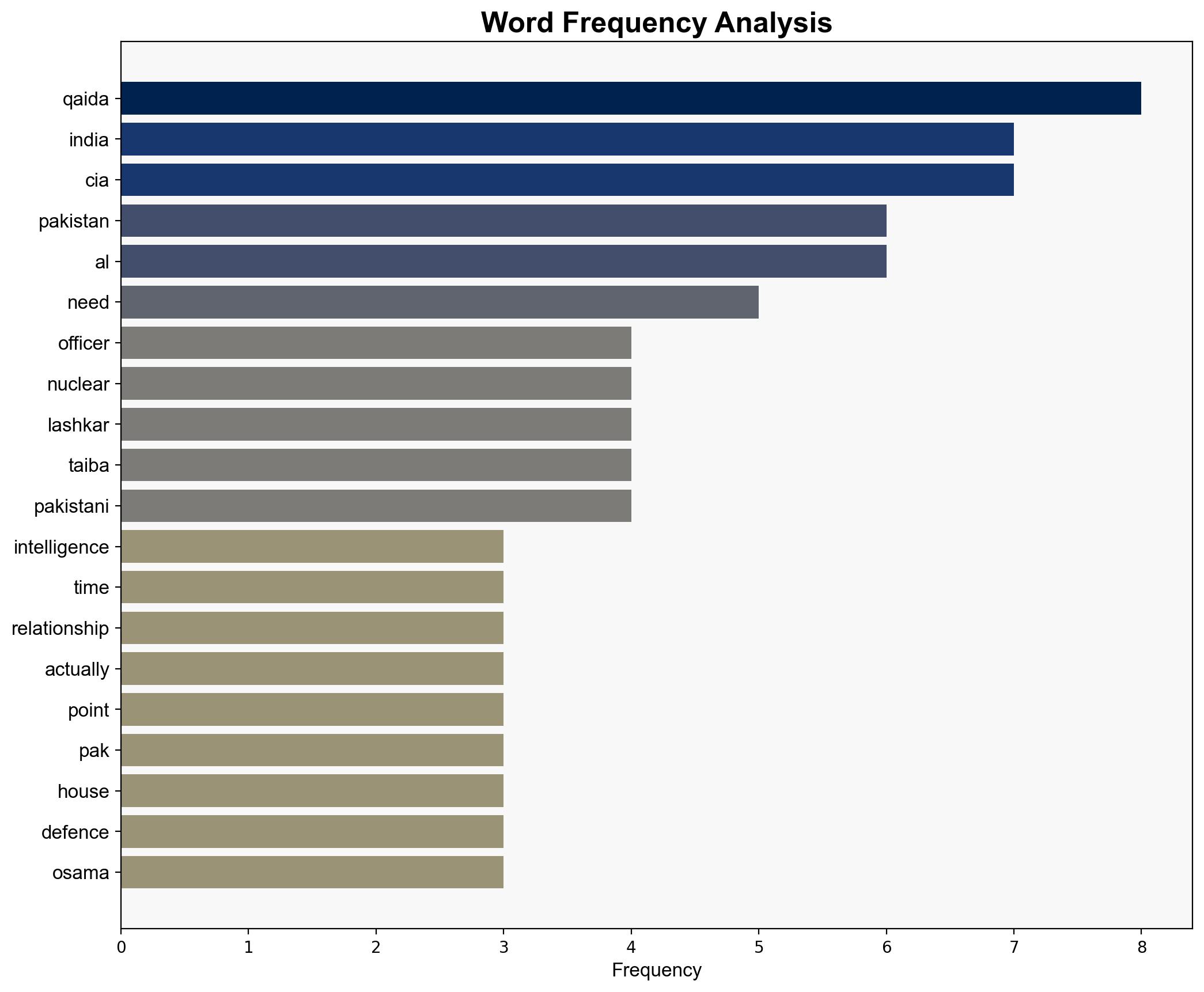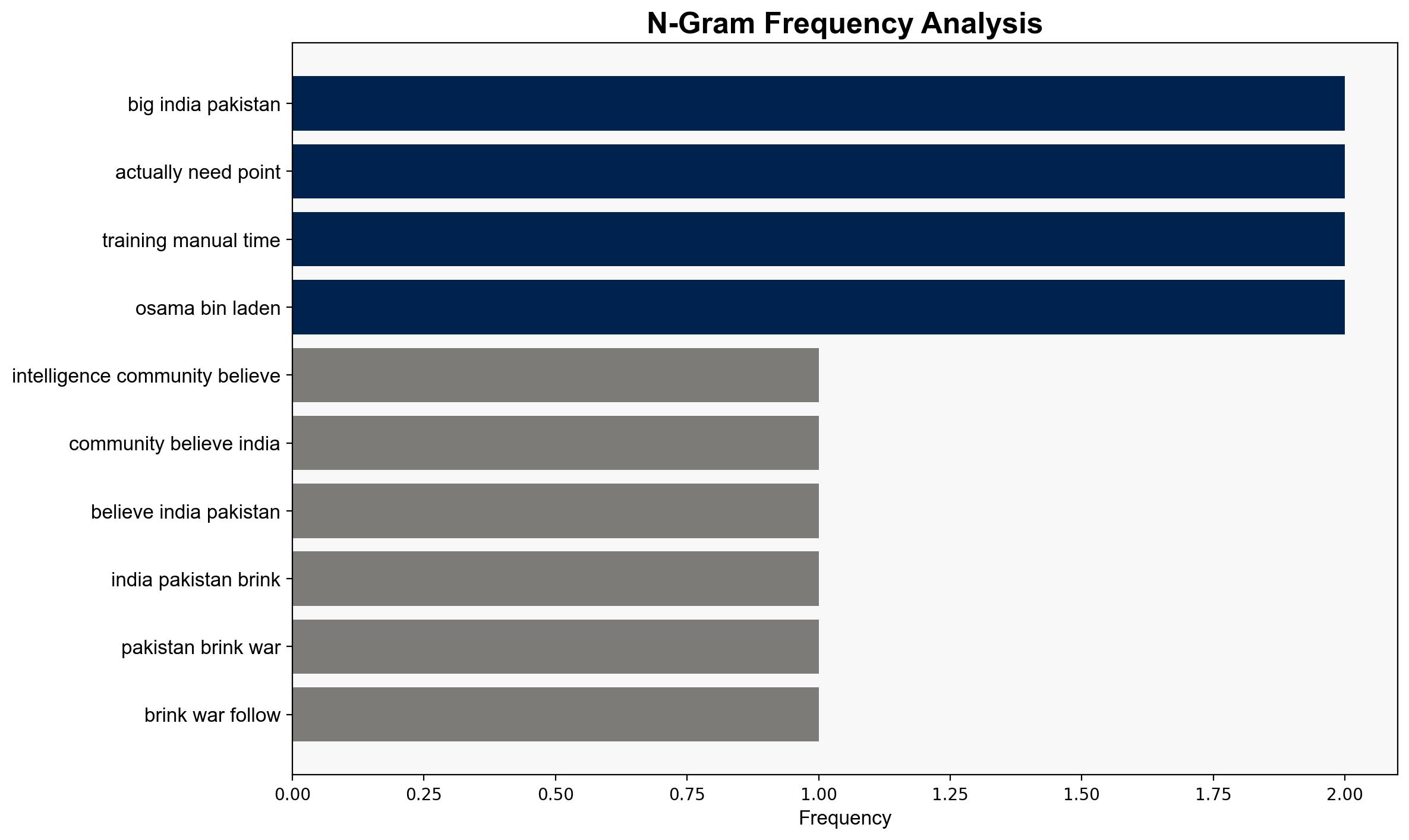Intel saw India Pak on brink of war in 2002 Ex-CIA official – The Times of India
Published on: 2025-10-26
Intelligence Report: Intel saw India Pak on brink of war in 2002 Ex-CIA official – The Times of India
1. BLUF (Bottom Line Up Front)
The analysis suggests a moderate confidence level that the 2002 India-Pakistan standoff was influenced by both internal and external factors, with a significant role played by intelligence misinterpretation and geopolitical maneuvering. The most supported hypothesis is that the situation was exacerbated by strategic miscalculations and external pressures rather than an inevitable escalation to war. Recommended action includes enhancing intelligence-sharing mechanisms and diplomatic engagement to prevent similar crises.
2. Competing Hypotheses
1. **Hypothesis A**: The 2002 standoff was primarily driven by genuine military tensions and the threat of war was imminent due to aggressive posturing and historical animosities.
2. **Hypothesis B**: The standoff was largely a result of strategic miscalculations and external geopolitical pressures, with the threat of war being exaggerated by intelligence interpretations and political narratives.
Using ACH 2.0, Hypothesis B is better supported due to the lack of direct evidence of an immediate intent to engage in full-scale war and the presence of significant external influences, including U.S. diplomatic interventions and intelligence assessments linking regional actors to global terrorism.
3. Key Assumptions and Red Flags
– **Assumptions**: Hypothesis A assumes that both nations were prepared to engage in war, overlooking diplomatic channels. Hypothesis B assumes that geopolitical factors played a larger role than military intentions.
– **Red Flags**: The intelligence linking Lashkar-e-Taiba to Al-Qaida may have been overstated, influencing threat perceptions. Potential cognitive bias includes confirmation bias in interpreting intelligence to fit pre-existing narratives.
– **Inconsistent Data**: Lack of clear evidence connecting military movements to an actual war plan.
4. Implications and Strategic Risks
The potential for misinterpretation of military actions as aggressive posturing could lead to unintended escalation. Economic impacts include destabilization of regional markets and increased defense spending. Cyber threats could emerge from retaliatory actions. Geopolitically, strained India-Pakistan relations could affect alliances and regional stability.
5. Recommendations and Outlook
- Enhance intelligence-sharing frameworks between India, Pakistan, and international partners to improve threat assessment accuracy.
- Promote diplomatic dialogues to address underlying tensions and establish conflict de-escalation protocols.
- Scenario Projections:
- Best: Improved relations and reduced military expenditures through diplomatic engagement.
- Worst: Renewed tensions leading to military skirmishes and economic downturns.
- Most Likely: Continued diplomatic stalemate with periodic tensions.
6. Key Individuals and Entities
– John Kiriakou (former CIA officer)
– Lashkar-e-Taiba
– Al-Qaida
– Osama bin Laden
7. Thematic Tags
national security threats, cybersecurity, counter-terrorism, regional focus





